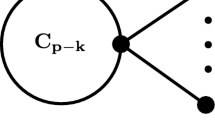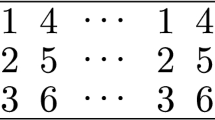Abstract.
A graph is perfect if for every induced subgraph, the chromatic number is equal to the maximum size of a complete subgraph. The class of perfect graphs is important for several reasons. For instance, many problems of interest in practice but intractable in general can be solved efficiently when restricted to the class of perfect graphs. Also, the question of when a certain class of linear programs always have an integer solution can be answered in terms of perfection of an associated graph.
In the first part of the paper we survey the main aspects of perfect graphs and their relevance. In the second part we outline our recent proof of the Strong Perfect Graph Conjecture of Berge from 1961, the following: a graph is perfect if and only if it has no induced subgraph isomorphic to an odd cycle of length at least five, or the complement of such an odd cycle.
Similar content being viewed by others
Author information
Authors and Affiliations
Additional information
Received: December 19, 2002 / Accepted: April 29, 2003 Published online: May 28, 2003
Key words. Berge graph – perfect graph – skew partition
Mathematics Subject Classification (1991): 05C17
Rights and permissions
About this article
Cite this article
Chudnovsky, M., Robertson, N., Seymour, P. et al. Progress on perfect graphs. Math. Program., Ser. B 97, 405–422 (2003). https://doi.org/10.1007/s10107-003-0449-8
Issue Date:
DOI: https://doi.org/10.1007/s10107-003-0449-8




